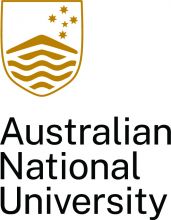Australian graduates are enjoying their brightest short-term job prospects in well over a decade, as pandemic lockdowns give way to a recruitment binge.
The insatiable labour market has delivered the best employment results for recent students since the onset of the global financial crisis, according to the annual Graduate Outcomes Survey. The full-time employment rate for domestic bachelor’s graduates rose 10 percentage points to 79 per cent – the highest level since 2009 – as the proportion of workers seeking more paid hours fell by over one-third.
The overall employment rate rose to 88 per cent, the best result since 2015. Median salaries also experienced their biggest rise since 2015, with annual pay packets increasing by about A$2,600 (£1,500) for men and A$3,200 for women.
Foreign graduates saw an even bigger surge in their work prospects, albeit from a substantially lower base, with 58 per cent of those with bachelor’s degrees reporting full-time employment in 2022 – up from just 43 per cent the year prior. Master’s and doctoral graduates reported their best full-time employment rates in a dozen years.
The figures are based on responses from more than 130,000 people who had graduated between four and six months previously, in surveys conducted between November 2021 and May 2022.
“The acute impact of Covid-19 on recent graduates’ employment opportunities has now passed,” said Lisa Bolton, head of the Quality Indicators for Learning and Teaching (Qilt) programme at the Australian National University’s Social Research Centre. “A substantial increase in the full-time employment rate was observed for both domestic and international undergraduates.”
The brightest job prospects were in the health fields, with full-time employment rates ranging from 93 per cent to 97 per cent in medicine, pharmacy and rehabilitation. Veterinary, engineering, teacher education, dentistry, business, nursing, agriculture and environmental science courses all produced full-time employment rates north of 80 per cent.
“Domestic and international graduates are securing full-time work in fields we need the most, including in STEM, health and teaching,” said Universities Australia chief executive Catriona Jackson. “A university degree helps people broaden their horizons and get the job they want while ensuring employers can access the workers they need to deal with the competitive pressures.”
Science and maths degrees generated the weakest full-time employment rates for undergraduate qualifications, at under 73 per cent. Humanities, culture and social science courses saw the biggest improvement in job prospects, with full-time employment rising 15 percentage points to 73 per cent.
Around 17 per cent of recent bachelor’s graduates undertook further full-time study last year – similar to pre-pandemic levels and about four percentage points lower than in 2021– suggesting that a Covid-induced spike in further learning has now passed.
Sixty-nine per cent of the bachelor’s graduates with full-time employment were working in managerial or professional occupations last year, up about 2 percentage points from 2021. Higher education analyst Andrew Norton predicted a further increase, with Australian Bureau of Statistics data showing that professional and managerial employment is trending up strongly for young people.
请先注册再继续
为何要注册?
- 注册是免费的,而且十分便捷
- 注册成功后,您每月可免费阅读3篇文章
- 订阅我们的邮件
已经注册或者是已订阅?


